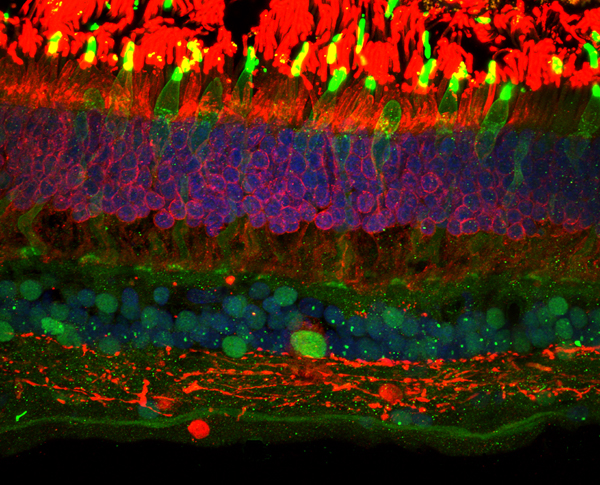This paper by Clairton F. de Souza, Michael Kalloniatis, Philip J. Polkinghorne, Charles N.J. McGhee, Monica L. Acosta examines glutamate receptors and their functional activation in the human retina.
Glutamate is the major excitatory neurotransmitter in the vertebrate retina and those excitatory neurons in the retina rely on a host of receptors to detect glutamate and transduce that detection into a neuronal signal. These receptors are α-amino-3-hydroxyl-5-methylisoxazole-4-propionic acid (AMPA), kainic acid (KA) and N-methyl-d-aspartate (NMDA) receptors. Through the use of 1-amino-4-guanidobutane; AGB, it is possible to functionally characterize the expression of ionotropic glutamate receptors.
Retinal mapping using AGB has advantages including the immunocytochemical identification of a whole population of neurons expressing functional glutamate gated receptor channels. The authors of this paper extended AGB studies by activating retina with AMPA, KA and NMDA into the functionality of ionotropic receptors in peripheral aged human retina to serve as a comparison for functional analysis of retinopathies such as retinal detachment. The results demonstrate AMPA activated receptors in virtually all calretinin immunoreactive AII amacrine cells. Some bipolar cells including DB3 OFF bipolar cells displayed functional KA receptors among other findings. Go check out the paper…
The image above is a section of normal human retina. L/M Cone photoreceptors and bipolar cells (Alexa 488; green) are shown in the outer and inner nuclear layers, respectively and a few ganglion cells are also seen. Rod photoreceptors (Alexa 594; red) are labelled in the outer retina, whereas a dopaminergic amacrine cell (Alexa 594; red) is observed with its connections in the inner plexiform layer. Cell nuclei are labelled with DAPI (blue). Images were collected at 60x magnification on Olympus FV1000 confocal microscope.
